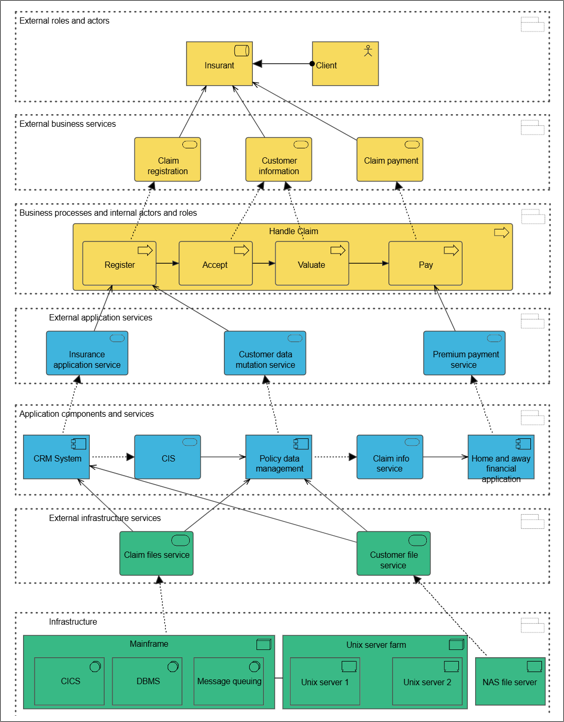Concerns: Identification of competencies, authority, and responsibilities
Purpose: Designing, deciding, informing
Scope: Single layer/Single aspect
The organization viewpoint focuses on the (internal) organization of a company, department, network of companies, or of another organizational entity. It is possible to present models in this viewpoint as nested block diagrams, but also in a more traditional way, such as organizational charts. The organization viewpoint is very useful in identifying competencies, authority, and responsibilities in an organization.


